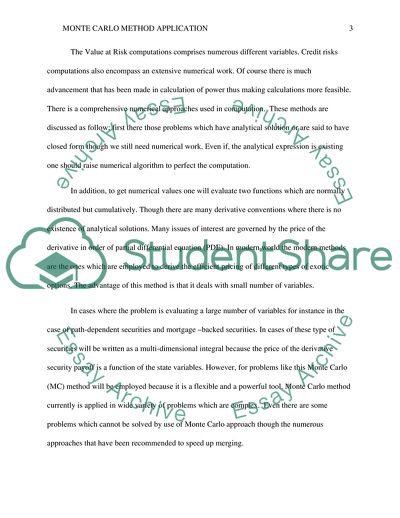Cite this document
(The Subject Area of Monte Carlo Methods in Financial Mathematics Term Paper Example | Topics and Well Written Essays - 4750 words, n.d.)
The Subject Area of Monte Carlo Methods in Financial Mathematics Term Paper Example | Topics and Well Written Essays - 4750 words. https://studentshare.org/mathematics/1816642-report-on-the-subject-area-of-monte-carlo-methods-in-financial-mathematics
The Subject Area of Monte Carlo Methods in Financial Mathematics Term Paper Example | Topics and Well Written Essays - 4750 words. https://studentshare.org/mathematics/1816642-report-on-the-subject-area-of-monte-carlo-methods-in-financial-mathematics
(The Subject Area of Monte Carlo Methods in Financial Mathematics Term Paper Example | Topics and Well Written Essays - 4750 Words)
The Subject Area of Monte Carlo Methods in Financial Mathematics Term Paper Example | Topics and Well Written Essays - 4750 Words. https://studentshare.org/mathematics/1816642-report-on-the-subject-area-of-monte-carlo-methods-in-financial-mathematics.
The Subject Area of Monte Carlo Methods in Financial Mathematics Term Paper Example | Topics and Well Written Essays - 4750 Words. https://studentshare.org/mathematics/1816642-report-on-the-subject-area-of-monte-carlo-methods-in-financial-mathematics.
“The Subject Area of Monte Carlo Methods in Financial Mathematics Term Paper Example | Topics and Well Written Essays - 4750 Words”. https://studentshare.org/mathematics/1816642-report-on-the-subject-area-of-monte-carlo-methods-in-financial-mathematics.


